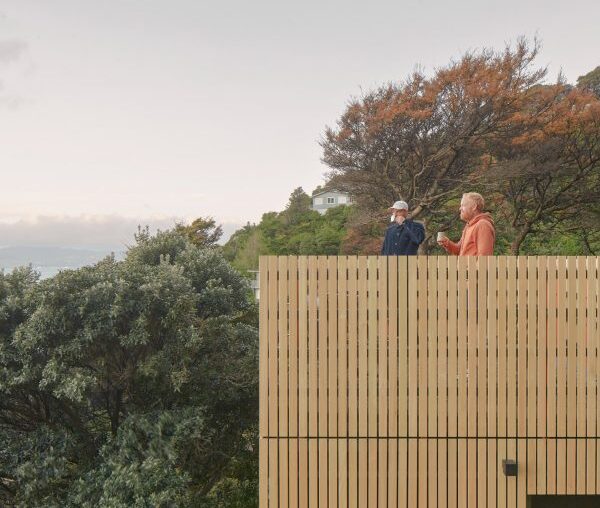Wood is the dominant material throughout Karaka Tower, a vertical house extension in Wellington, New Zealand, designed by local studio Arête Architects to evoke a treehouse.
Located on a densely vegetated and sloped site, the tower-like structure comprises an art studio and bedroom, which connects to the main house via a polycarbonate corridor.
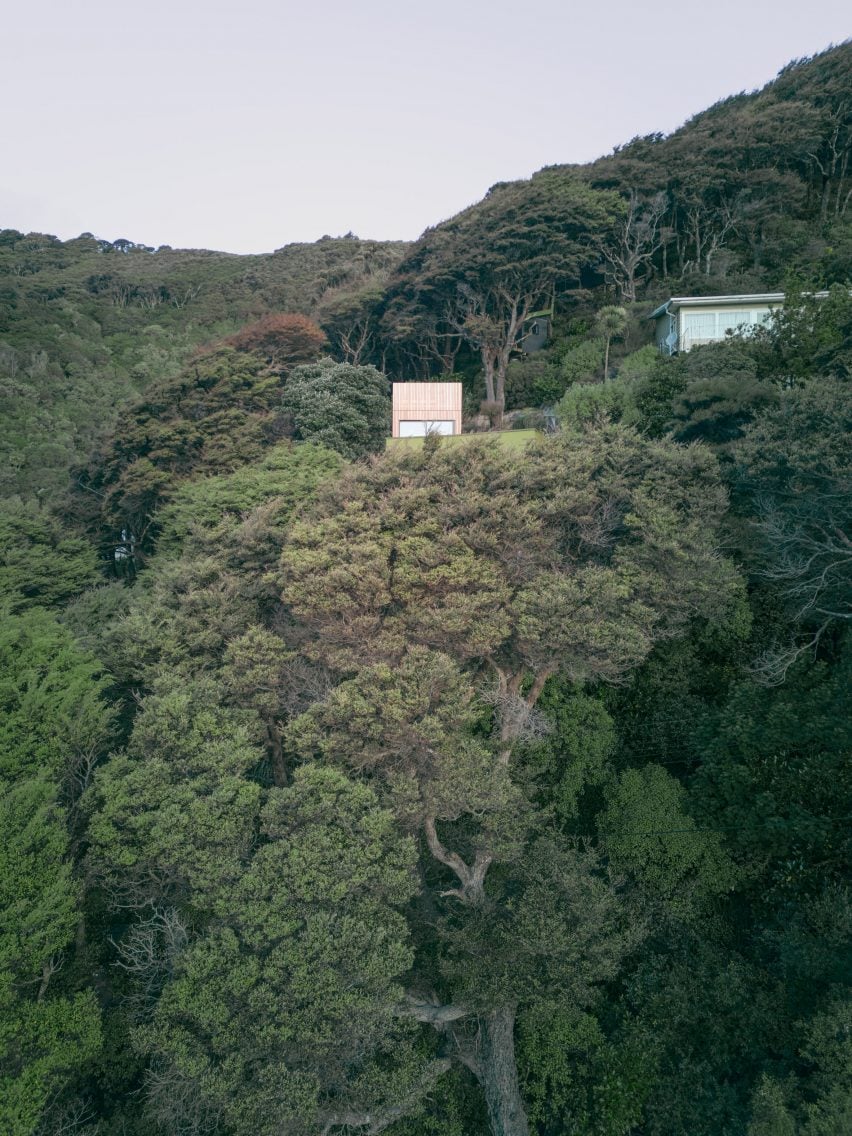
Karaka Tower sits on the nine-square-metre platform of an old shed that had fallen into disrepair.
Its towering form was dictated by this small footprint and the owner’s spatial needs, which required Arête Architects to develop a stacked arrangement for the extension.
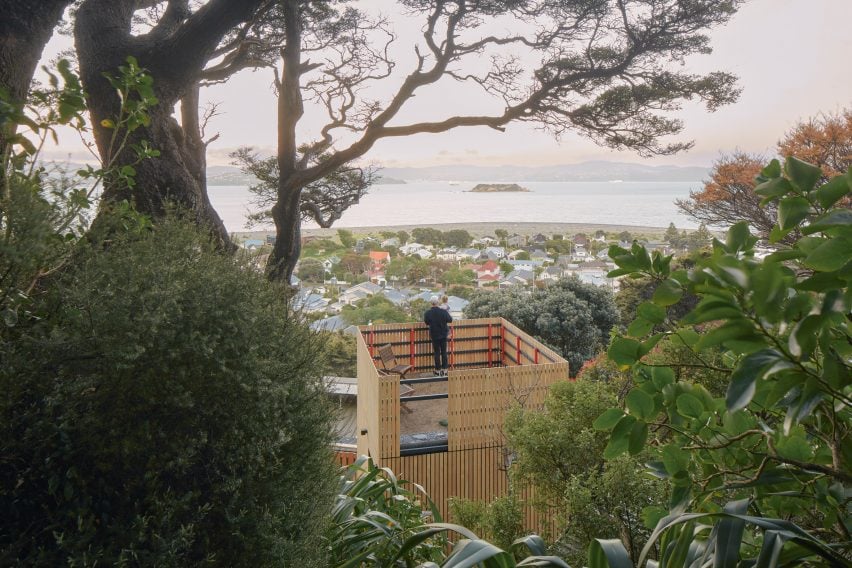
“The biggest driver for our design solution was the site,” studio founder Sam Brown told Dezeen.
“The house is perched on a heavily vegetated 45-degree slope so bare, flat land was hard to come by. There was a small patio space with the client’s existing dilapidated art studio sitting on the hill above that we earmarked for demolition and then used that bare land for development.”

According to Brown, the standalone tower design also evolved from feasibility studies that uncovered an extension directly to the main house, a small structure from the 1970s, was not structurally possible.
“Early in the project we undertook feasibility studies, to look at additional floors on top of the existing home, or a small extension out the front of the ground floor, however these studies uncovered the inappropriateness of the existing home to support additional structure, especially given Wellington’s earthquake-prone nature,” said Brown.
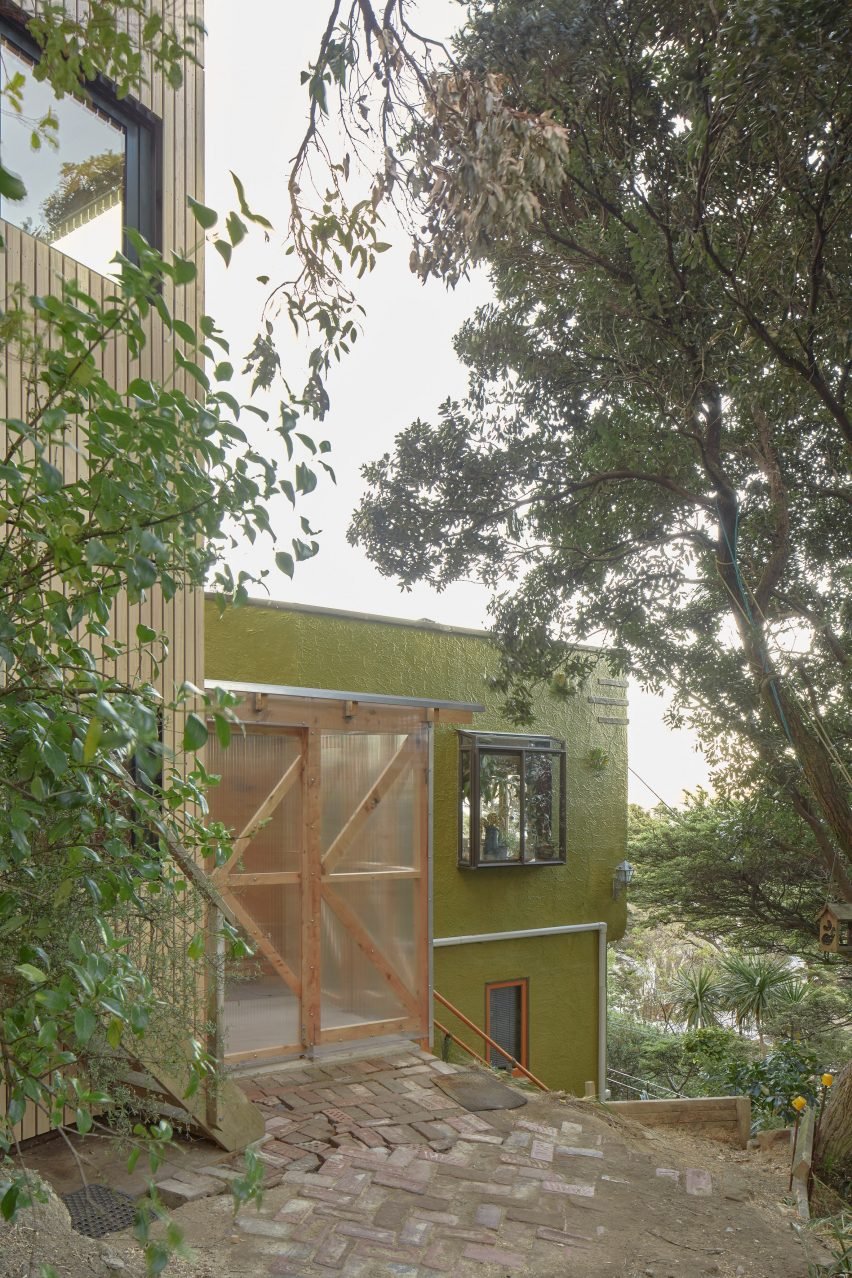
Outside, Karaka Tower is defined by its stringybark eucalyptus cladding, chosen for its hardwearing properties. It has been left untreated to encourage it to grey over time and blend in with the surrounding tree trunks.
The tower is connected to the house by a compact corridor built with a combination of cypress wood and polycarbonate, designed to evoke the feeling of a treehouse built from “found materials”.
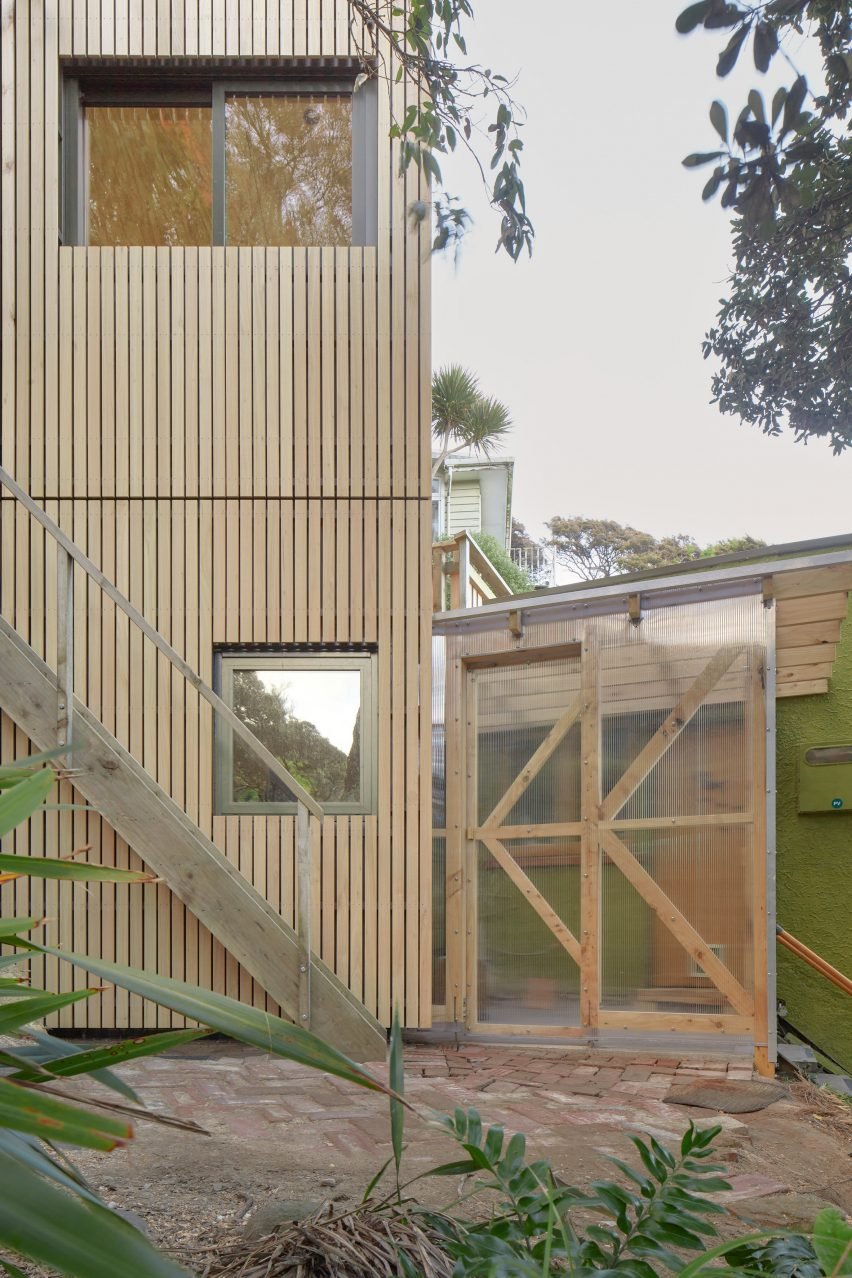
The main structure is also made from cypress wood in the form of prefabricated modules, which were craned into the site by helicopter.
Modular construction was required due to the site being steep, accessible only by foot and heavily vegetated. It also ensured a quick construction time and minimal disruption to the plot, which shares its access point with 12 other homes.
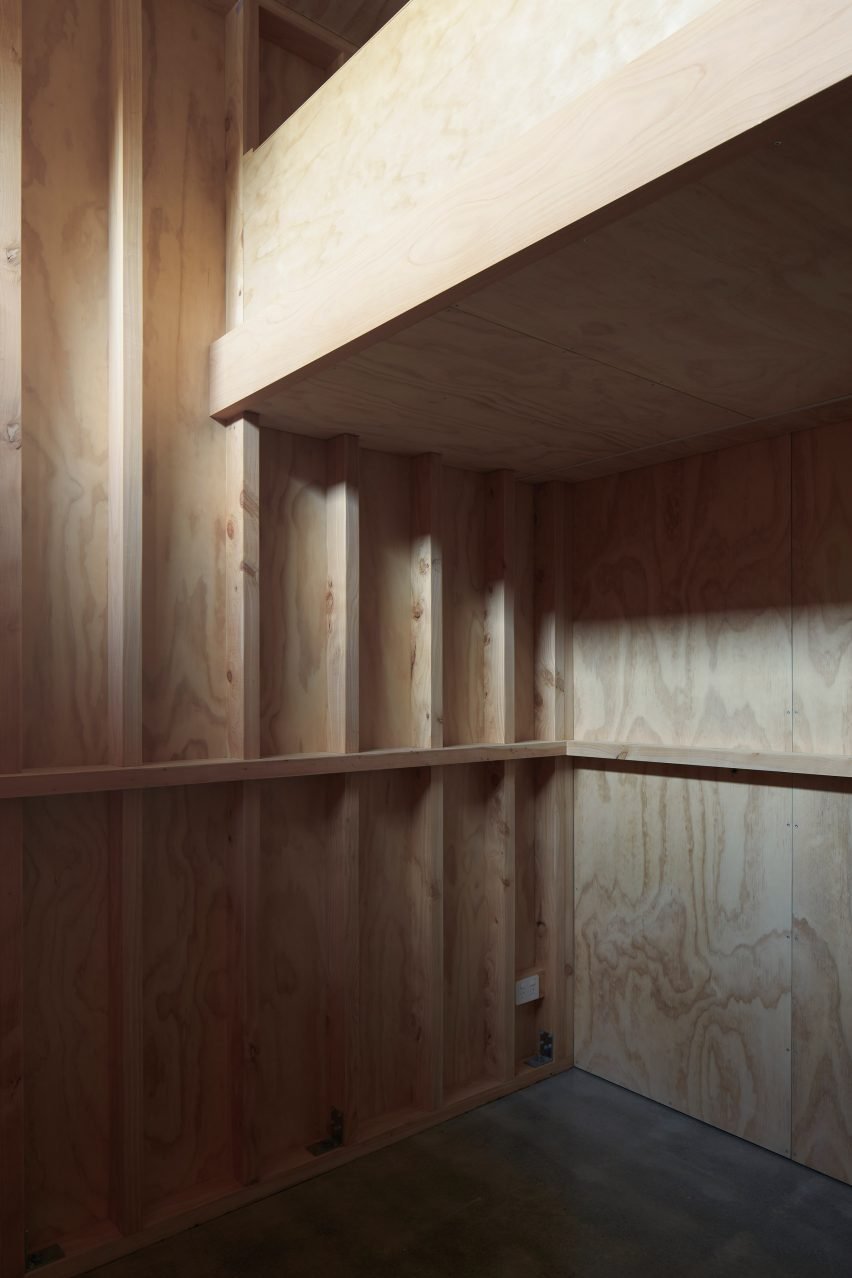
“The decision to prepare the site and the helicopter to lift all the models into place in one day meant that the impact on the neighbours and the surrounding context was minimal,” said Brown.
“The helicopter lift concept was ultimately a huge success with the site going from a prepared foundation to watertight dwelling in around 24 hours.”
Inside, Karaka Tower comprises a ground-level bedroom with a bed on a mezzanine platform.
Above is the studio, which is lined with large sliding windows overlooking Te Whanganui-a-Tara, otherwise known as Wellington Harbour.
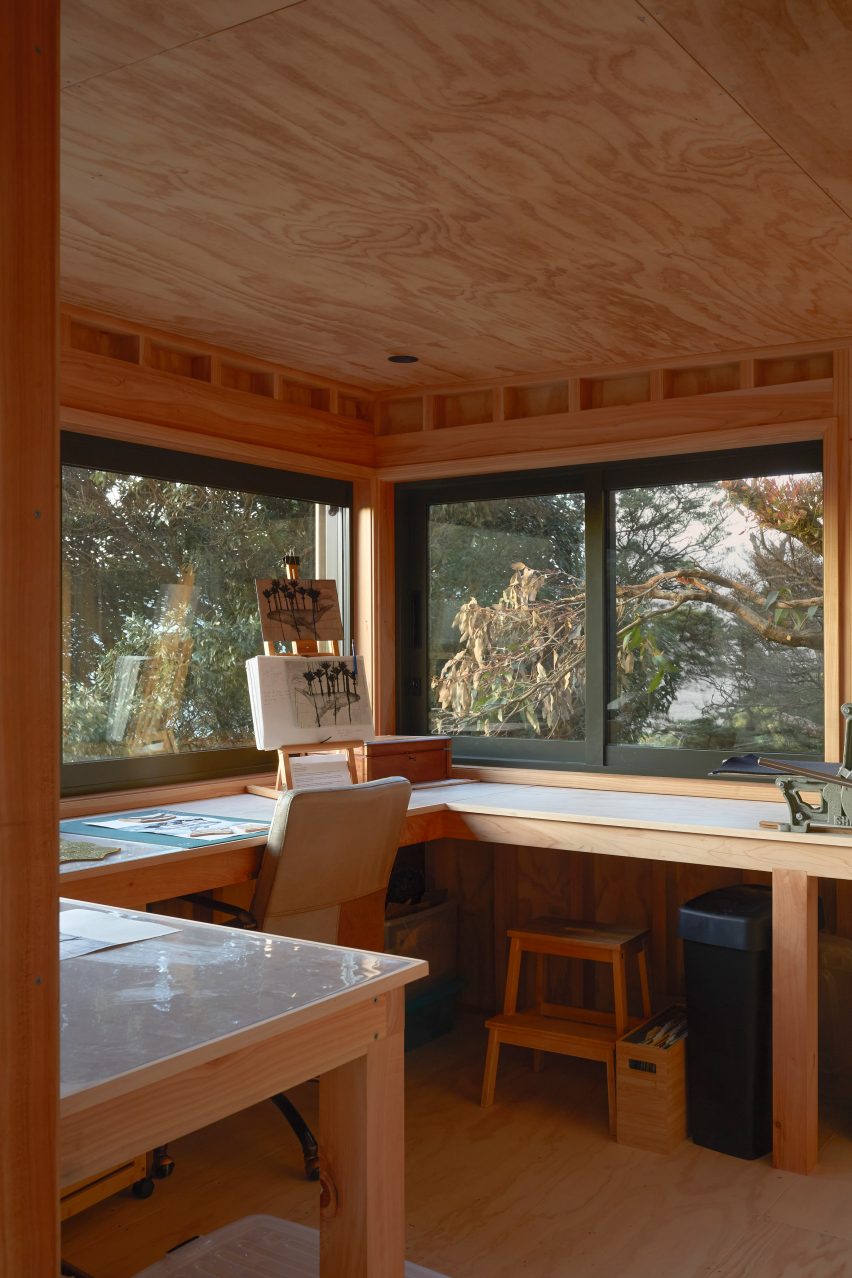
The interiors are dominated by pine and cypress, waxed with beeswax sourced on-site and intended to “feel as though they have been carved from within the tree”.
Though all the fixings are hidden, the cypress framework is left exposed to further the feeling of Karaka Tower being a treehouse crafted by hand.
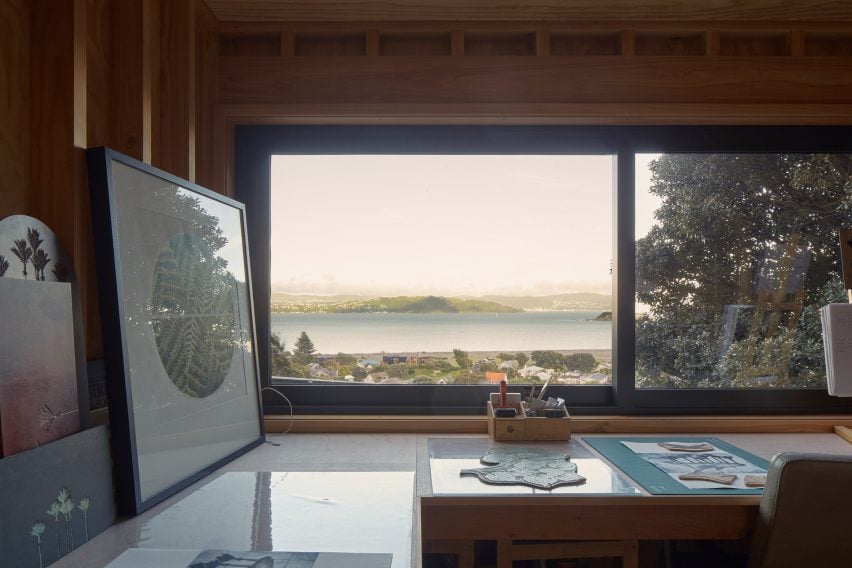
“When you are within the tower you feel like you are in a childhood treehouse, overlooking the land below,” said Brown.
“We wanted to mimic this nostalgic feeling with the exposed framing and warm honest tones as if the tower had been built up in the trees.”
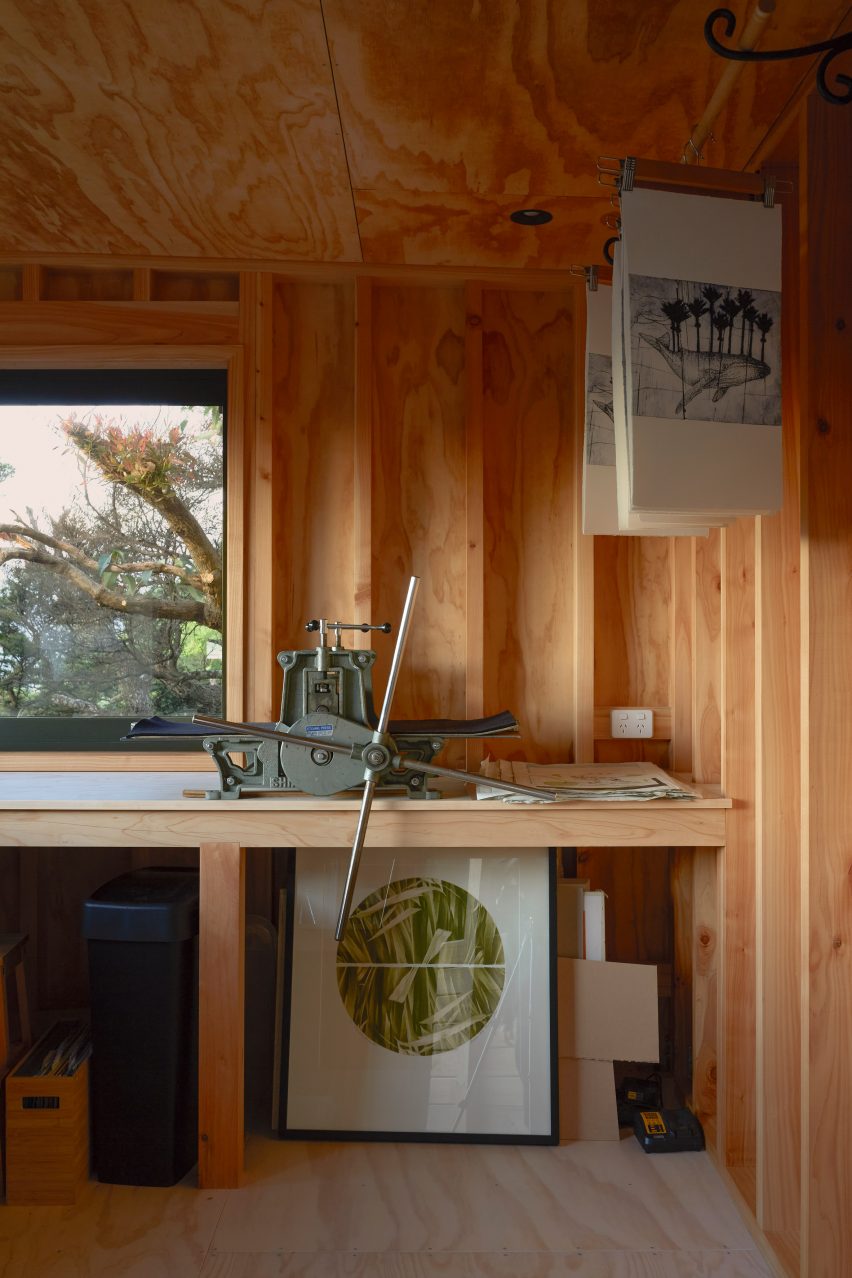
Completing Karaka Tower is a roof garden, lined with weed matting to facilitate the growth of small plants and designed to be “the only flat piece of ground on the whole site”.
“In early concept sketches we whimsically showed a horse grazing on the roof which one of the daughters took to mean she was getting a horse for Christmas, lesson learnt!” Brown said.
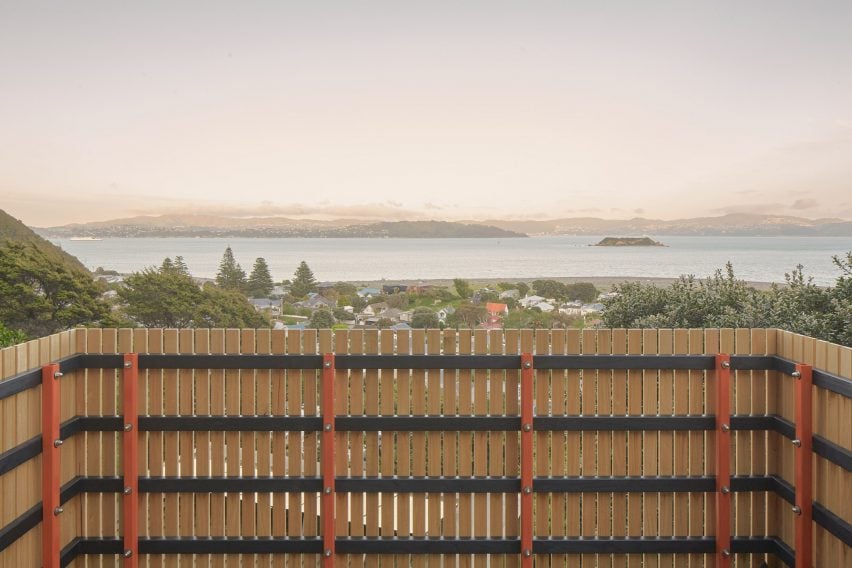
Karaka Tower is among the projects vying for House renovation of the year in the Dezeen Awards, for which the five-strong shortlist also includes Shadow House by Grotto Studio.
Other homes on Dezeen intended to evoke treehouses include a house by Malan Vorster that offers views of the Cape Town forest and the South Yarra House extension in Melbourne by AM Architecture.
The photography is by Thomas Seear Budd.
